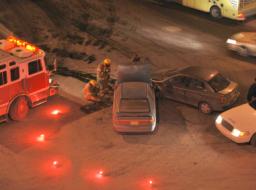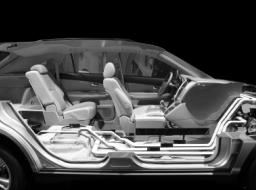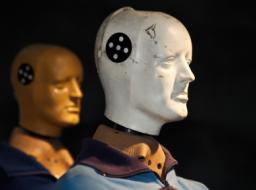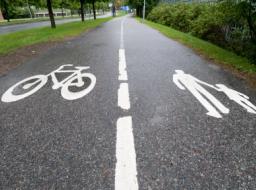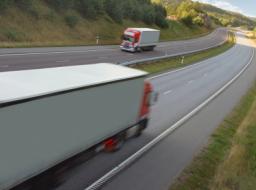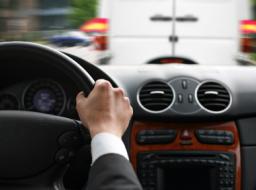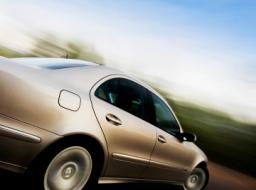News and Information:
Note: The contents of third-party articles presented on this page are provided for general knowledge of current events and do not necessarily represent the views or opinions of Expert Reconstruction Company LLC.
In the News:
Process of accident reconstruction involves interpreting evidence -- and laws of physics
By ANDREW WOLFE Staff Writer,
from www.nashuatelegraph.com
Accidents happen, but accident reconstruction experts prefer not to call them that.
"There were days when everything was called 'accidents,' " said Nashua Police Lt. John Fisher, head of the department's accident reconstruction unit.
"In crash investigations, the term is 'crash' or 'collision.' In most of the cases, there is fault of some sort," Fisher said.
When a collision is severe and fault is unclear, the case may well wind up in court, where a dozen people will have to sort out who's to blame. Chances are good that jurors will hear from at least two accident reconstruction experts, with two differing explanations of what happened.
Having covered two such cases of late, The Telegraph asked various experts and lawyers what such disputes say about the science of accident reconstruction.
"Accident reconstruction is a tool, just like a hammer or a firearm or a computer. Like any tool, it can be used wisely and effectively or it can be used improperly and dangerously," said Richard Lehmann, the lawyer who represented a Nashua man accused of killing a pedestrian near the University of New Hampshire in 2004.
"It's presented to the jury as science. In a courtroom, it takes good lawyering to be a check on it being used dangerously."
Crash reconstruction isn't so much a science as an amalgamation of many different scientific methods and disciplines applied toward the study of motor vehicle collisions.
Experts liken the process of accident reconstruction to putting together a jigsaw puzzle with no edge pieces, no box and no photo to show how it should look when it's finished.
"Accident reconstruction, as a profession, is a blend of both science and 'art,' " wrote Bruce McNally, of McNally & Associates Accident Reconstruction Services of Rochester. "The science of accident reconstruction is grounded in Newtonian physics, and is generally beyond reproach.
"However, the 'art' of accident reconstruction is dependent upon the individual expert's understanding of the laws of physics and his/her interpretation of the physical evidence."
Reconstruction experts typically start by diagramming the scene to show the road and all its features, noting weather, lighting and other such conditions. They put each piece of potential evidence in its place, from the vehicles and occupants to any bits of debris scattered by the crash and traces such as tire or impact marks. Then, they work backward to figure out how things got there, experts say.
Certain aspects of crash investigations are fairly simple, Fisher said. Experts will seldom disagree greatly on their estimates of a vehicle's speed, for instance; interpreting the marks that tires leave on pavement is so fundamental that it rarely leads to dispute.
"Ninety-nine percent of our collisions, I would say there's really no disagreement on how the collision occurred or what the factors were," Fisher said. "More factors in a collision makes for a much more involved investigation and reconstruction."
A car that caroms off several objects, for example, will have a far more complex trajectory and set of forces exerted on people and things inside it, experts say. Crashes involving many vehicles are more complicated, and crashes with no clear roadway evidence -- tire marks or other indicators of what caused a loss of control -- can be more puzzling, too.
Still, no matter how complex, Strafford County Sheriffs Capt. Joseph DiGregorio said, every accident is simply a series of discrete events involving objects, all of which can be gauged and quantified.
"It all boils down to Newtonian physics, when you think about it," said DiGregorio, a certified reconstructionist.
(Fisher and DiGregorio worked on fatal crashes that The Telegraph covered, in which they and opposing experts reached different conclusions. Both cases remain before the courts, and Fisher and DiGregorio declined to discuss those cases specifically.
Drivers and other eyewitnesses are the least reliable source of information, reconstruction experts agree."Witness statements are nice, but I don't read them," said one expert, Carl Lakowicz, of Northpoint Collision Consultants in Gilmanton.
When people see something unfold quickly and dramatically, their brains tend to trick them into thinking they caught all of the action by filling in any gaps to make sense of what they've seen, Fisher noted.
"Humans, by nature, want to make what they don't know turn into a video," Fisher said. "Sometimes, witnesses to car collisions will speak fairly adamantly to something . . . it turns out probably didn't happen."
When witnesses' statements match the physical evidence, on the other hand, that can be powerful proof, Fisher said.
"We're careful. We look at both," he said.
Police investigate all serious collisions, by law, and most accident reconstruction experts are either active-duty or retired police officers, but some also come to the field from engineering backgrounds.
Because so many collisions result in insurance claims and lawsuits, there is a great deal of business for experts who can draw authoritative conclusions about who and what caused a crash.
Police officers learn basic accident investigation during their training with the state's police academy, Fisher said, and those who work in accident reconstruction units go through additional classes.
Police in New Hampshire generally go through courses run by the Institute of Police Technology and Management, which sends instructors to Nashua for its two-week courses. IPTM also offers weeklong courses in areas such as motorcycle crashes and collisions involving pedestrians, Fisher said.
There is an organization that accredits and certifies accident reconstruction experts, the Accreditation Commission for Traffic Accident Reconstruction, but the accreditation process takes time, money and no small amount of brainpower, and it isn't in any way mandatory to have such accreditation in order to work in the field.
You can get a couple of classes," DiGregorio said, "and dive into the accident reconstruction world."
For those reasons, active-duty police are less likely to be certified than those who work in the private sector, experts say.
"ACTAR accreditation wasn't a big deal when I got into it," but it has become more so, Fisher said of accident reconstruction. Two officers on the Nashua Police reconstruction team are currently working toward certification, he said.
"It does take a lot of study time," Fisher said. "You could be an SAE-certified engineer and not pass the ACTAR test."
Applicants can't even take the ACTAR test until they have a fair amount of training and experience. The test includes a written portion, followed by a full day spent diagramming and diagnosing simulated crash scenes, Bartlett said.
"I would say that one-day tests like this are the best we've got for distinguishing somebody who has minimal competence versus sub-minimal competence," Bartlett said, adding later, "The ACTAR test is a good effort to separate wheat from chaff."
However, while the test can weed out incompetence and single out top performers, Bartlett said, that leaves a lot of room for variety among the masses of reconstruction experts, certified and not. Bartlett said he has seen certified experts reach conclusions he found "inexplicable," and also encountered uncertified experts "who are quite competent."
"I think it's important to recognize that egalitarianism is inappropriate here: Not all 'experts' are equal," Bartlett wrote. "Training, experience, understanding of underlying principles and even ethics can come into play, and equal weight should not be given to every opinion by everyone on every topic."
DiGregorio, one of the few active-duty law enforcement officers in the state who is also ACTAR certified (Hudson Police Lt. David Bianchi is another), said he believes certification carries some clout.
Lawyers who work with such evidence in the courtroom disagree on the importance of an expert's resume. Crash reconstruction is well established and widely accepted as science, despite the lack of mandatory standards and certifications, lawyers said. Judges rarely refuse to accept experienced investigators as experts.
"Accreditation in and of itself is not the answer," Manchester attorney Paul McDonough said. "I think that jurors look at the quality of the testimony rather than the letters following the person's name.
"It's not unusual to have two experts from opposite sides testify to opposite conclusions based on the same set of facts," McDonough said, and jurors simply have to decide for themselves which is right.
"I think jurors have to perform that same function whether it's two experts testifying or two eyewitnesses testifying," he said.
Attorney Gordon Rehnborg, of Manchester, agreed that disagreements are common, but added that in his view, "The expert's total credential resume, their CV (curriculum vitae), is very important."
it's their job to enforce society's laws, police have to decide relatively early in their investigation whether they have evidence to justify arresting someone or to require a blood sample, Fisher said. If there is evidence of intoxication, however, police can always charge a driver with DWI and continue to review the crash, he noted.
Some experts in the private sector suggest police can be swayed by the need to figure things out fast and the human tendency to want to hold someone accountable when something awful happens.
"You want to do the right thing . . . and you lose objectivity," said Lakowicz, himself a retired Concord police officer.
"If a reconstructionist finds an answer that's convenient, they may simply stop digging. This is a trap that a lot of officers fall into. . . . They come to a conclusion within a half an hour and they decide, 'This is what happened.'
"We go into it kind of blindly, not having the energy and the anger and the compassion that police officers have when they show up at these terrible accidents."
Fisher and DiGregorio dispute the idea that police are inherently biased toward finding fault, although they say all experts agree with the need for objectivity. Police get paid for their time all the same, regardless of whether or whom they arrest, he notes.
"There are no bonus points for a yes or no," Fisher said.
Although police are responsible for enforcing the laws, he said, "It can't create bias. If it does, you're not doing your job.
"We've got to look into everything, and there's just no easy way out of it," Fisher said. "You can't, and we don't, jump to conclusions about these things."
Fisher recalls investigating a collision on Lake Street. A woman in the neighborhood had been broadsided by another vehicle, the driver of which was intoxicated, as witnesses at the scene clamored to point out to police.
The thing was, Fisher recalls, the woman had run a stop sign. The other driver was charged with DWI, but the crash wasn't his fault, Fisher found.
If anything, DiGregorio said, police reconstructionists are biased toward the accused. Once they estimate the probable speed of a vehicle, for instance, the expert will assume a speed at the low end of the range to give a person the benefit of doubt.
"As a police investigator, it's up to me to interpret the evidence in the best light for a defendant," DiGregorio said. "No reconstructionist wants to falsely accuse anybody of anything.
"\When two experts look at the same crash and disagree on what happened or who caused it, experts say, either there isn't enough evidence for anyone to tell what happened or one of them is wrong.
"It is true that an investigator can sometimes read more into the evidence than it can support, or may fail to recognize what it's telling us, but the science is solid when there's relevant evidence," wrote Wade Bartlett of Rochester, a mechanical engineer and ACTAR-certified specialist in motorcycle collisions. "It's up to the investigator to find it, document it and interpret it correctly without bias.
"In my experience, if experts from both 'sides' get all the same information, and the information set is sufficient to draw conclusions, the experts agree to a much greater extent than they disagree. Evidence doesn't lie, but there are some cases where there is insufficient information to come to a conclusion that's confidently 'beyond a reasonable doubt' (criminal matters) or even 'more likely than not' (civil matters)."
Knowing what can -- and can't -- be known is a big part of the job, McNally wrote.
"The limitations of any given reconstruction are based upon how much physical evidence is available in a case, how well that evidence was documented and how well that evidence is interpreted by the expert," McNally wrote. "It is up to the individual expert to understand what the limitations are in a given incident, and not exceed those limitations."
Of course, getting one case wrong doesn't mean an expert is incompetent.
DiGregorio noted, "You can be the best surgeon in the world and make a wrong diagnosis."
In lawsuits and some other types of hearings, judges and jurors decide what happened and who is to blame based on "a preponderance of the evidence," or more likely than not.
In criminal cases, cases must be proven "beyond reasonable doubt," so a tie goes to the defendant.
"If you have two theories and they are both plausible, there's got to be a not guilty; otherwise, you risk convicting innocent people," Lehmann notes.
"There's a very strong impulse to want to hold somebody responsible when something bad happens," Lehmann said. However, he added, "There's such a thing as accidents."
******************************************************************************************************************************************
Digital evidence becoming central in criminal cases
By Mike Brunker
msnbc.com
If you are unfortunate enough to land in court after a serious automobile accident, the star witness against you may not be an eyewitness or even a human being. It could be your car.
Today’s high-tech automobiles increasingly rely on computers to maximize performance and monitor operating systems. But while the under-the-hood computers are doing that, they may also be recording data about your driving.
Typically, that information is collected by a vehicle’s “event data recorder,” or EDR, a computer module that is often compared to the “black box” on a commercial airliner. Among other things, EDRs are capable of recording a number of driver behaviors, including brake application, steering, speed at time of impact in the event of a crash and whether the driver and passengers were using seatbelts.
Such information is primarily intended to help improve federal safety standards, but increasingly it is being used in court cases in which vehicles were involved in a serious accident or the commission of a crime.
For example, electronic evidence played a key role in a criminal case at the center of Friday night’s “Dateline NBC” (10 p.m. / 9 p.m. Central). The case involves a heartbroken Montana teenager, a dangerous stretch of highway and some ominous text messages.
A deadly crash on a notorious stretch of highway forever changes the lives of two Montana families. Dateline NBC's Keith Morrison reports.
“Essentially, vehicles nowadays are a huge conglomeration of computer chips and modules,” said Mike McCullough, a retired Phoenix police detective who investigated serious crashes for many years. “And the electronic data they collect is going to become more and more common as evidence down the road.”
Among the drivers of that anticipated growth are new National Highway Traffic Safety Administration regulations that take effect next year.
The rules do not require EDRs – already in use in more than 85 percent of U.S. vehicles – but they mandate that in cars that have them, the devices must capture and preserve at least 15 types of crash data, including pre-crash speed, engine throttle, changes in forward velocity and airbag deployment times. And one day, the agency noted in its final rule, they may even play a role in getting emergency medical service quickly dispatched to the scene of an accident by automatically sending a 911 alert.
'Staggering' amount of information
Even now, however, such information could be cross-checked with information from devices like cellphones and GPS units to build what could be an air-tight court case.
“Now you’re in a situation where, if someone has the time and expertise, they can say you drove from here to there at this speed, you parked at Whole Foods, here’s what you bought, then you got back in your car and drove here and made a call to this number,” said Dean Gonsowski, eDiscovery counsel with Clearwell, which is part of the security firm Symantec. “... It’s staggering how much information can be collected.”
“You want to have the equipment examined to determine the reliability, both from a chronological and content standpoint,” he said. “And there are times when that evidence is of an exculpatory nature, so you want to make sure that you gain access to it – whether it’s a computer or an iPhone or whatever – and that you preserve that evidence immediately.”Drew Findling, an Atlanta attorney and chairman of the National Association of Criminal Defense Lawyers’ Forensic Disciplines Committee, notes that e-evidence might just as easily create an unshakable alibi, which is why he routinely hires experts to examine equipment and data.
Courts already are wrestling with the challenges presented in general by electronic evidence, which has become almost ubiquitous in both civil and criminal cases.
“Electronic evidence is admitted in almost every trial in America, whether it’s a phone bill or electric bill or a document that’s created, stored or transmitted electronically,” said Mark D. Rasch, director of cybersecurity and privacy consulting at the technology services company CSC and former head of the Justice Department’s computer crime unit. “… When you think about it, even a crime scene photograph is electronic evidence now.”
The increasing use of digital evidence has spawned a new legal specialty – e-discovery – and has added layers of complexity that didn’t exist when cases were won or lost on paper documents. In some cases – particularly those involving corporations – the amount of digital data that must be retrieved and sorted through prior to trial is immense.
“State crime labs are adding high-tech pieces, but if you think it’s hard to examine urine and blood samples, try working through a zip drive, a hard drive or an iPhone,” said Findling, the defense attorney.
Evidentiary laws also have failed to keep pace with rapidly changing technology, said Rasch.
“We changed the discovery laws eight or 10 years ago, but we need to change a bunch of different laws, including electronic privacy laws,” he said. “And we need to continue to tweak the laws on chain of custody, validation and verification, authentication, corroboration and the scope and extent of discovery.”
While lawmakers struggle to catch up, judges and courts are taking wildly varying positions on the reliability and admissibility of digital evidence.
“Right now it depends on the state, depends on the judge,” said McCullough, president of the Southwestern Association of Technical Accident Investigators. “A lot of information has to be established to show that it’s reliable.”
Gonsowski said much of the variation is attributable to the differing technology comfort levels among judges, prosecutors and defense counsels.
“You see some inconsistent decisions because a case may require that the litigants and the judge all understand how Facebook works, for example,” he said. “… So there’s a lot of sort of groping around – not quite the blind leading the blind, but folks wrestling with these new technologies as they apply to traditional legal concepts.”
Stricter rules for digital evidence
Experts have different views of those to-and-fro battles.
Rasch, the former Justice Department official, said that courts often impose higher requirements on digital evidence than they do with physical documents, such as letters.
“We demand a (greater) degree of certitude for certain kinds of electronic evidence than is demanded in the physical world. … A lot of it has to do with the general unease we have with electronic evidence. We’re not sure it’s reliable, that it hasn’t been tampered with.”
But others worry that current laws – and the judges who enforce them – have failed to adequately consider that electronic evidence is “inherently malleable or ephemeral.”
Among them is Steven Teppler, a partner in the Chicago law firm Edelson McGuire and co-chair of the American Bar Association’s Digital Evidence Committee. He is part of what he describes as a growing movement within the legal profession to have digital evidence deemed “hearsay,” and thus generally inadmissible in legal proceedings unless its reliability can be demonstrated.
“Unless we change the rules of evidence to require a higher level of reliability, you have this built in problem where people say, ‘It comes out of the computer, therefore it must be reliable,’” he said.
But that doesn’t account for the fact that programmers create the software that instructs those machines to generate data, Teppler said.
“Computers will repetitively create bad information if they are programmed incorrectly,” he said. “Just because a computer generates it doesn’t mean it’s true.”
***********************************************************************************************************************
March 19, 2011, Cortez, Colorado
from Cortez Journal.com, by Reid Wright
Riffey found not guilty
"Christopher Gayner, an accident reconstructionist testifying for the defense, argued Riffey's injuries indicate he was hurt by the seat belt on the passenger's side - a point contested in testimony from an emergency room doctor, forensic pathologist and a crash scene reconstructionist with the Colorado State Patrol".
*************************************************************************************************************************
Articles:
"Legislation regulating transportation safety is saving lives and reducing serious injuries in motor vehicle collisions year after year. In 1966 the U.S. Congress passed the Highway Safety Act, which led to the formation of the National Highway Traffic Safety Administration (NHTSA). The 40th anniversaries of these events recently passed unbeknownst to most people, yet the ongoing societal benefits give cause for reflection and recognition of the thousands of lives saved and .... " (MORE ... Read Entire Article).
Source: Christopher Gayner, MSME, San Luis Obispo County Bar Bulletin
***************************************************************************************************************************************
